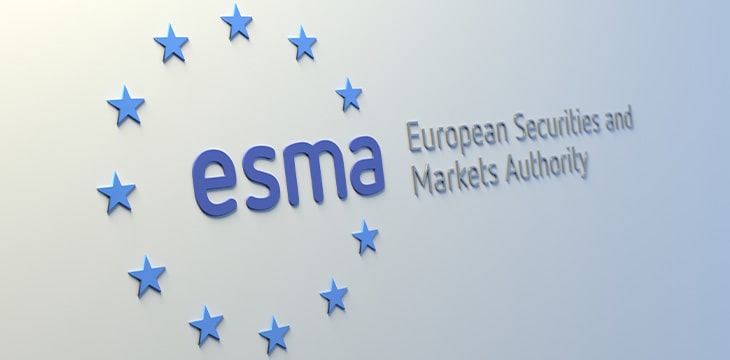|
Getting your Trinity Audio player ready...
|
The European Securities and Markets Agency (ESMA) has disclosed that it will not amend the existing rules on data reporting for the proposed plans to launch a securities trading pilot for the region.
The European Union (EU) laid bare its plans to experiment with tokenized securities and will utilize distributed ledger technology (DLT) to host the new offering. There were growing concerns that the ESMA would have to adjust its regulatory standards to accommodate the securities trading pilot.
The regulatory agency made its stance known to the public in a report stating that it will only closely watch the space to see if it will need to change its opinion, especially regarding the sharing of transaction data in existing records. ESMA added that it would publish a guiding document for stakeholders willing to participate in the EU’s DLT pilot.
The report from ESMA stems from the EU’s plans to launch a DLT pilot regime, a plan to build market infrastructure on distributed ledgers. The pilot regime will explore the “limitations on the DLT financial instruments that can be admitted to trading and settled on the DLT and cooperation between the DLT market operators, competent authorities, and the ESMA.”
A sandbox approach will be adopted by the EU and grants operators temporary leeway from existing operational rules. By being exempt from the financial services legislation, they hope that participants can experiment with new solutions for the tokenization of securities.
ESMA notes that a handful of firms have indicated interest to operate in the sandbox ahead of its launch in March. Critics of the plan remain skeptical about how traditional financial actions will be merged with DLT technology, but ESMA’s report downplays the concerns.
“Transaction on-chain will not necessarily occur at the same time as the settlement of the transaction,” ESMA said.
The EU’s unified march towards Web 3
The European Union has adopted a unified stance toward adopting DLT technology which it says ensures regulatory uniformity across the region. Apart from the DLT pilot scheme, the creation of a central bank digital currency (CBDC) has moved in the same direction, with all central banks acting in concert.
On the parliamentary side, the European Commission recently passed the Markets in Crypto-Assets (MiCA) as robust legislation to regulate digital assets across the 27 member countries.
The body also passed the Transfer of Funds Regulation (ToFR) to impose compliance standards on virtual currency transfers, which the EU says will stifle their use in money laundering, drug trafficking, and funding terrorism.
Watch: The BSV Global Blockchain Convention presentation, BSV On-chain Ecosystem Development in Europe

 01-07-2026
01-07-2026 




